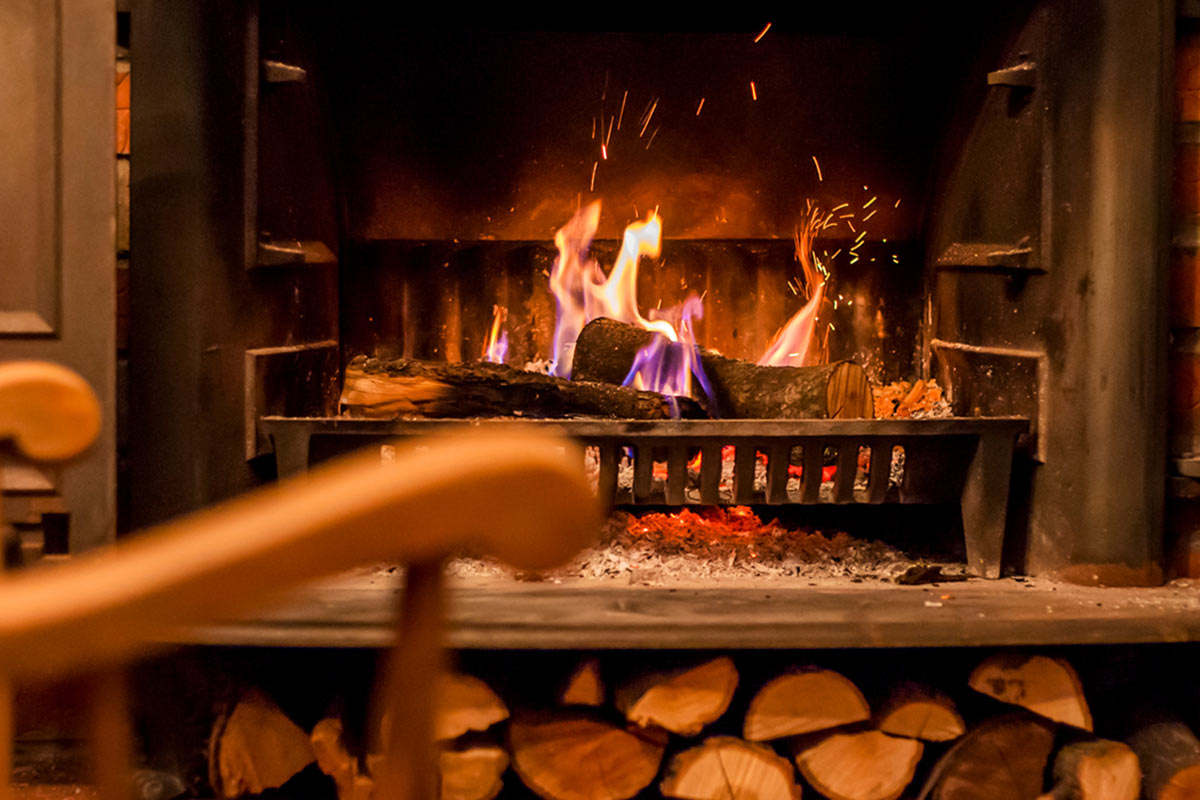Gas fireplaces have become increasingly popular in modern homes, offering a convenient and efficient way to enjoy the warmth and ambiance of a cozy fire without the hassle of traditional wood-burning fireplaces.
However, many homeowners wonder if they can enjoy the best of both worlds by burning firewood in a gas fireplace.
So, the question arises: Can you burn wood in a gas fireplace? In this article, we will explore the intricacies of using firewood in a gas fireplace and shed light on the safety and practicality aspects of this idea.
What You Need To Know About Gas Fireplaces
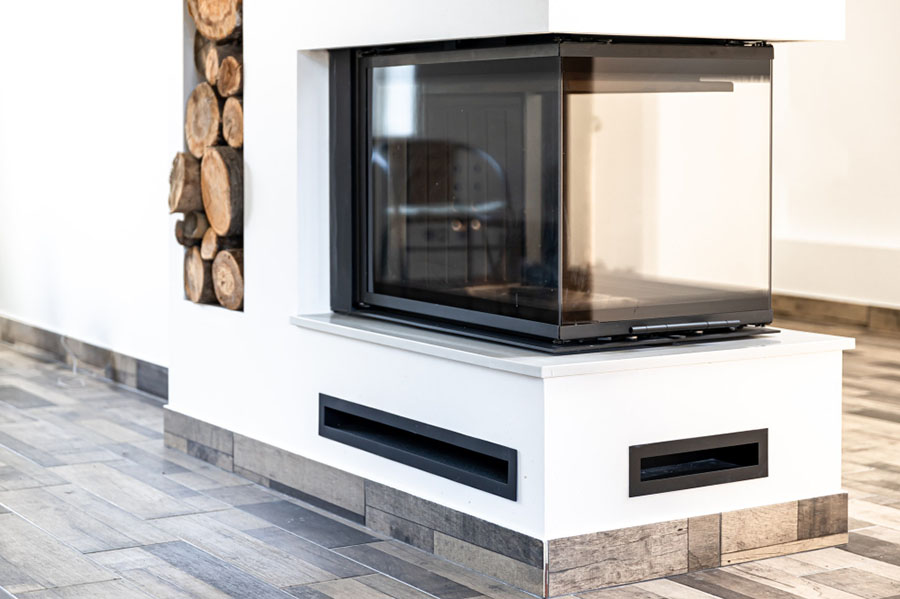
Gas fireplaces are a popular choice for homeowners seeking an alternative to traditional wood-burning fireplaces.
These fireplaces are designed to burn either natural gas or propane, providing instant heat and realistic flames at the push of a button.
Unlike wood-burning fireplaces that require manual ignition and regular fueling, gas fireplaces offer convenience through remote control operation.
With adjustable flame settings and thermostat controls, homeowners can easily customize the level of warmth and ambiance.
Types of Gas Fireplaces Available
Gas fireplaces come in various styles to suit different home aesthetics and heating needs:
- Built-in Gas Fireplaces: Install these directly into a wall or fireplace enclosure, offering a seamless and modern look.
- Gas Fireplace Inserts: Fit these into existing wood-burning fireplaces to provide an efficient heating upgrade.
- Freestanding Gas Fireplaces: You can place these portable units anywhere in the room, making them ideal for flexible heating options.
- Ventless Gas Fireplaces: These do not require a chimney or venting, so you can easily install unvented gas fireplaces in any room.
- Vented Gas Fireplaces: Use an existing chimney or venting system to expel combustion byproducts safely with these models.
With various options available, homeowners can select a gas fireplace that best suits their preferences and home layout.
Why Can’t Gas Fireplaces Burn Wood?
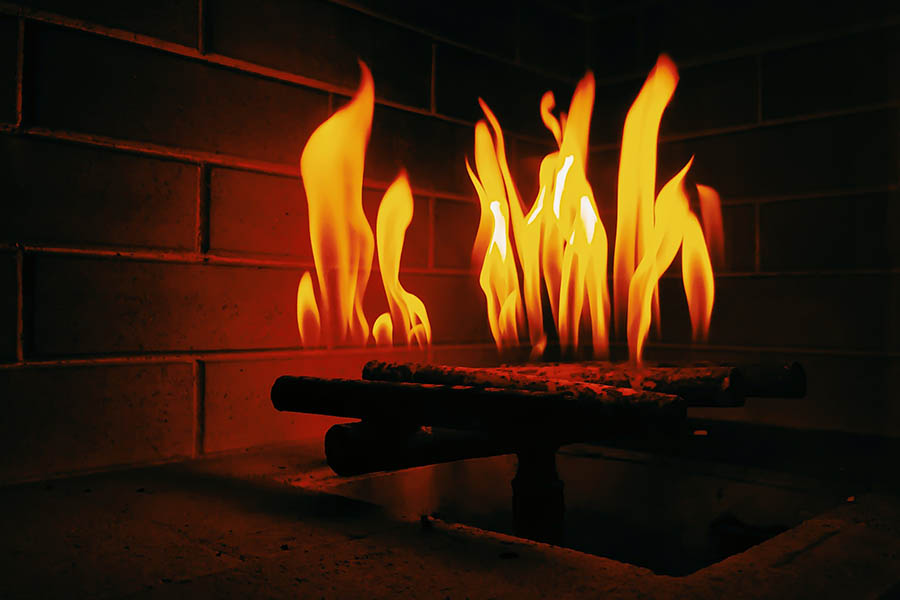
The concept of burning firewood in a gas fireplace might sound appealing, as it evokes the nostalgic charm of a traditional wood-burning fireplace. However, attempting to burn firewood in existing fireplace is not only impractical but also unsafe.
Gas fireplaces are specifically engineered and certified to burn either natural gas or propane. They lack the necessary features, such as a traditional flue and appropriate airflow, to safely and efficiently burn firewood.
Burning wood in a wrong gas fireplace can lead to several issues, including incomplete combustion, the production of harmful byproducts like carbon monoxide, and potential damage to the fireplace system.
Moreover, doing so may void the gas insert manufacturer’s warranty and compromise the safety of your home.
Understanding the Differences Between Gas and Wood-Burning Fireplaces
Gas fireplaces and wood-burning fireplaces have distinct purposes and mechanisms. Very nice gas fireplace rely on the controlled burning of natural gas or propane, providing instant flames and consistent heat output. They offer convenience, cleanliness, and ease of use with minimal maintenance requirements.
On the other hand, wood-burning fireplaces operate by burning firewood, utilizing a chimney or flue to vent the smoke and combustion byproducts safely. Wood fireplaces create a traditional and cozy ambiance, but they require more effort to maintain and produce variable heat levels.
Safety and Technical Limitations
Safety and technical limitations prevent most gas fireplaces from burning wood. These limitations include the absence of appropriate flue or venting systems, disrupting the balance of combustion and emissions, and inadequate heat tolerance for burning firewood.
As a result, attempting to burn wood in a gas fireplace can lead to damage to the fireplace components and house fire.
How Do I Know If My Gas Fireplace Can Burn Wood?
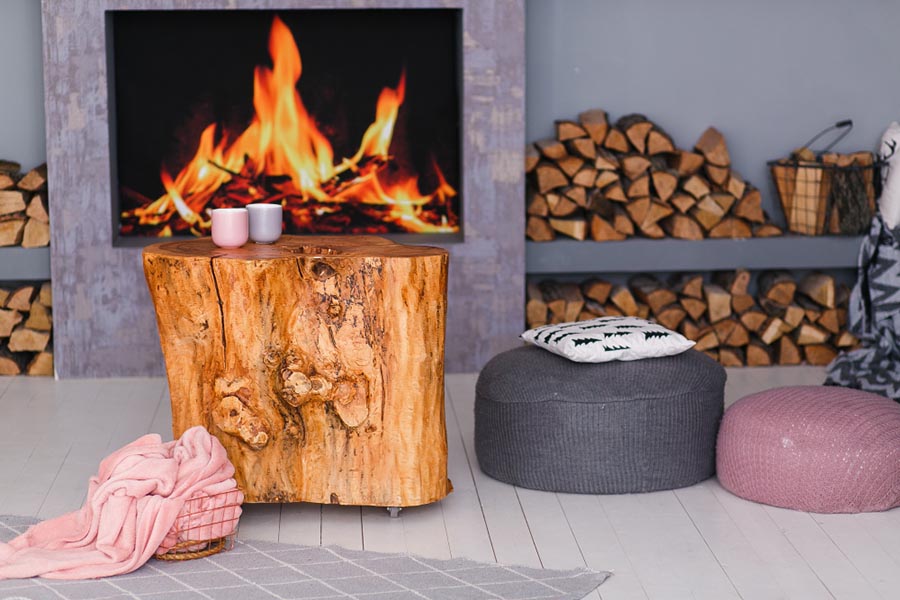
If you are determined to enjoy the rustic charm of burning firewood, you should verify whether your gas fireplace can accommodate this desire.
The first step is to inspect your gas fireplace fully. Look for any signs or labels indicating whether it is approved for wood burning.
However, it’s crucial to remember that most gas fireplaces are not designed or certified for burning wood.
Inspecting Your Gas Fireplace for Wood-Burning Compatibility
Thoroughly examine your gas fireplace to determine its suitability for either burning fuel or wood. Check for any markings, tags, or labels indicating the approved fuels.
If you find such indications, it is likely that your fireplace can only burn natural gas or propane. Moreover, the presence of a chimney or flue system in gas fireplaces is generally absent, which is essential for safe wood burning.
Checking Your Fireplace Manual
To be absolutely sure about your fireplace’s capabilities, refer to the fireplace manual provided by the manufacturer.
The manual will clearly outline the approved fuels and uses for your gas fireplace, ensuring you operate it safely and efficiently.
Adhering to the guidelines specified in the manual that prohibit wood burning or burning gas is essential to avoid potential hazards and maintain the warranty of your gas fireplace.
Can You Burn Wood in a Gas Starter Fireplace?
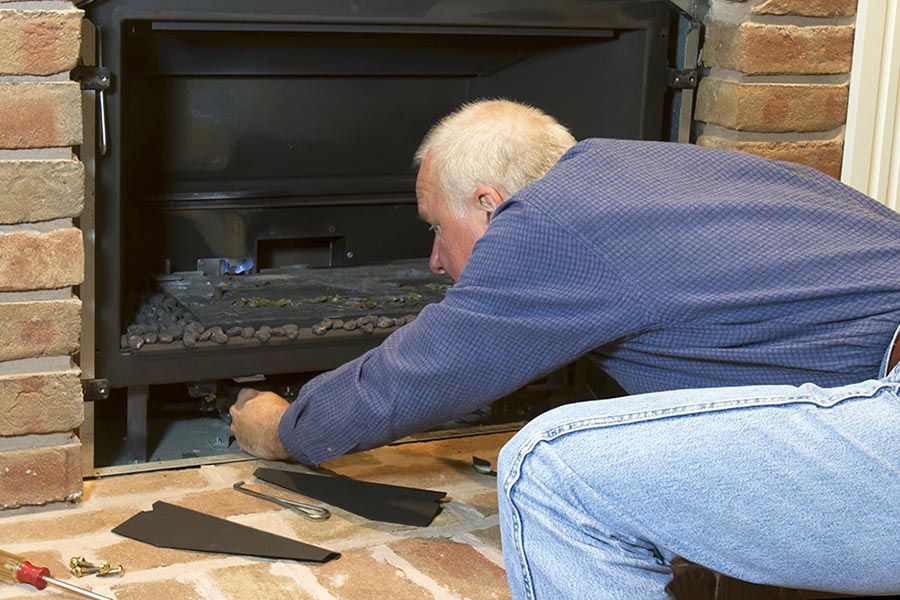
Gas fireplace starters, also known as gas starters or log lighters, are devices commonly found in traditional wood-burning fireplaces. They help in igniting the firewood quickly by using the gas line.
However, it’s essential to note that gas starters are not designed for continuous use throughout the burning process.
Understanding Gas Starter Fireplaces
Gas starters are usually pipes with small holes that run into the firebox of a wood-burning fireplace. Gas pipes release gas into the wood fireplace when turned on, enabling homeowners to ignite the wood easily.
Safety Considerations and Alternatives
It is not recommended to attempt to burn firewood on top of a gas starter in the wrong gas fireplace. Gas starters are not equipped to handle the sustained heat and potential ash produced by burning wood. Doing so may damage the gas starter and create safety hazards.
It is best to use gas starters exclusively for their intended purpose of igniting the wood and then switching to the gas fireplace for a safe and efficient burn.
Can You Convert a Gas Fireplace to Burn Wood?
Converting a gas fireplace to burn wood is a common question among homeowners seeking a more traditional fireplace experience.
However, it’s essential to understand that such a conversion from an existing wood fireplace is not a simple task and may not be feasible for all gas fireplace models.
Exploring the Feasibility of Conversion
Converting a gas fireplace to burn wood requires significant modifications to the gas fireplace insert installation and structure, including the addition of a chimney or flue system.
Qualified professionals should handle these modifications, as improper installation can lead to safety hazards and compliance issues. Additionally, converting a f gas fireplace insert to burn wood may void the warranty and certification of the appliance, impacting its performance and safety.
If you are considering a conversion, consult with fireplace experts or qualified technicians. They can assess your current gas fireplace setup, determine the wrong gas fireplace sound, feasibility of conversion, and offer appropriate recommendations to ensure safety and compliance.
Dangers of Burning Wood in a Gas Fireplace
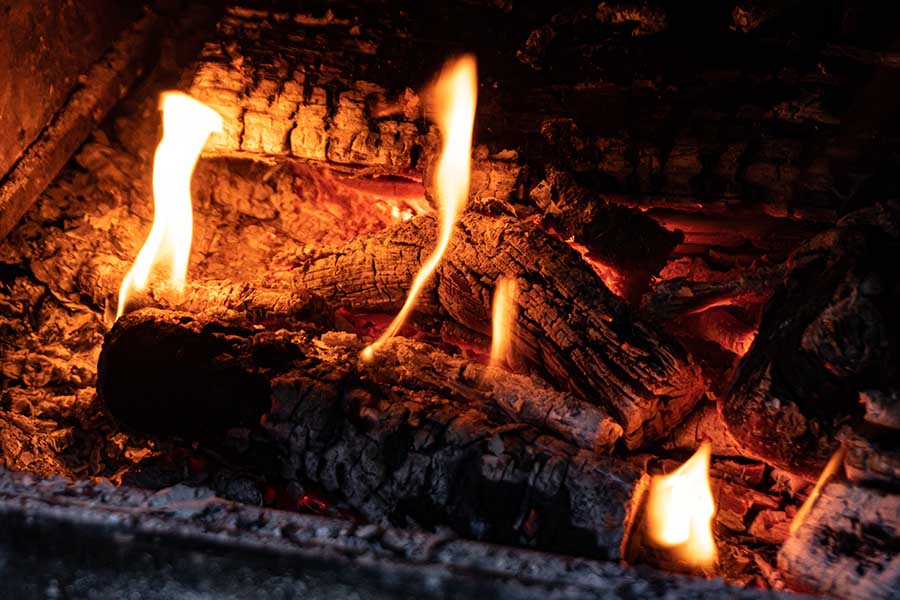
Attempting to burn wood in a gas fireplace can lead to various dangers and hazards, making it crucial to avoid mixing wood fire with fuels.
Potential Hazards of Mixing Fuels
The practice of burning wood pellets or firewood in a gas fireplace disrupts the appliance’s engineered design, leading to potential hazards.
The combination of gas and wood fuels can result in irregular flames, increased heat production, and the release of harmful byproducts.
This mix can create an unstable environment, increasing the risk of gas leaks, fire outbreaks, and other safety concerns.
Effects on the Gas Fireplace System
Gas fireplaces are not designed to withstand the demands of wood burning. The intense heat produced by burning wood can damage the gas inserts components, such as the burners, valves, and gas logs.
Over time, this can lead to performance issues, decreased efficiency, and costly repairs.
How Can I Tell If My Gas Fireplace Can Burn Wood?
Determining whether your gas fireplace is capable of burning wood requires careful examination and adherence to manufacturer guidelines.
Conducting a Thorough Inspection
Inspect your gas fireplace thoroughly for any indications of wood-burning capabilities. Look for labels, markings, or tags that specify approved fuels. Gas fireplaces designed for wood burning typically have additional features like an appropriate flue or chimney setup.
Following Manufacturer’s Guidelines
To avoid any ambiguities, consult the fireplace manual provided by the manufacturer. The manual will clearly state the approved fuels for your gas fireplace, ensuring you operate it safely and maintain compliance with warranty terms.
Inspect Your Fireplace Fully

Before considering any fuel conversions or any wood burning stoves, it is essential to inspect your gas fireplace thoroughly.
Importance of Regular Maintenance
Regular maintenance ensures your gas fireplace operates at peak efficiency and minimizes potential safety risks. Hire a qualified technician to inspect your gas fireplace annually, checking for any wear and tear, gas leaks, or signs of damage.
Avoiding Issues and Costly Repairs
By adhering your gas supply to proper maintenance schedules and using the correct fuel, you can prevent potential issues and avoid expensive repairs. Always follow the manufacturer’s guidelines for your gas fireplace to maintain its performance and safety.
Frequently Asked Questions About Gas and Wood Burning Fireplace
So Can You Burn Wood in a Gas Fireplace?
No, you should not burn wood in a gas fireplace. Gas fireplaces have specific designs for burning natural gas or propane, and they lack the necessary components to ensure safe wood burning.
Attempting to burn wood in a gas fireplace can be dangerous and may cause damage to the appliance.
Stick to using the appropriate fuel, such as natural gas or propane, for your gas fireplace.
What Are the Potential Dangers of Burning Wood in a Gas Fireplace?
Burning wood in a gas fireplace poses several dangers. Gas fireplaces lack the necessary features, like a proper flue or venting system, for safe and efficient wood burning.
This can lead to incomplete combustion, the release of harmful byproducts like carbon monoxide, and potential damage to the gas fireplace components.
Mixing fuels can create an unstable environment, increasing the risk of gas leaks, fire outbreaks, and other safety concerns.
Is It Possible to Install a Chimney to Burn Firewood in My Gas Fireplace?
Some homeowners may consider installing a chimney to enable wood burning, but it’s not recommended. Gas fireplaces are not designed for wood burning, and introducing a chimney without proper engineering can compromise your home’s structural integrity and create fire hazards.
Additionally, keep in mind that local building codes and regulations may prohibit such modifications.
What Are the Alternatives to Experiencing a Wood-Burning Ambiance in a Gas Fireplace?
If you desire the cozy ambiance of a wood-burning fireplace without the hazards of burning wood in a gas fireplace, there are alternatives that support wood burning now available.
Consider using gas logs or ceramic logs designed to resemble real wood.
These gas log sets offer a similar visual appeal to previously wood burning fireplaces and create a warm and inviting atmosphere without compromising the safety or the efficiency of your gas fireplace.
Conclusion
In conclusion, answering the main question can you burn wood in a gas fireplace is not safe, efficient, or recommended. Manufacturers design and certify gas fireplaces to burn specific fuels. Introducing firewood can lead to potential hazards, damage the gas fireplace insert and system, and compromise efficiency.
If you desire a wood-burning ambiance, consider using gas logs or ceramic logs designed to look like real wood logs and provide a similar effect to handle burning wood without compromising the safety and efficiency.
By respecting the intended use of your gas fireplace and understanding its limitations, you can continue to enjoy the warmth and comfort it provides while prioritizing the safety of your home and loved ones.

